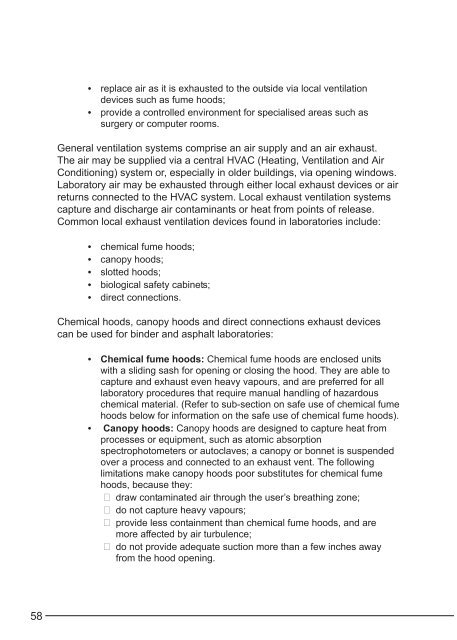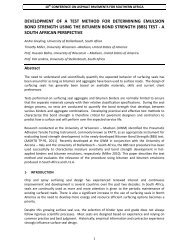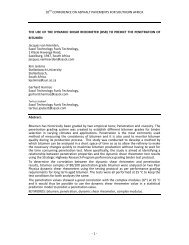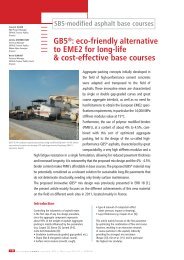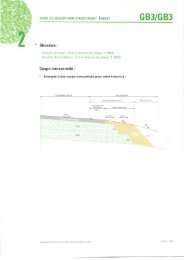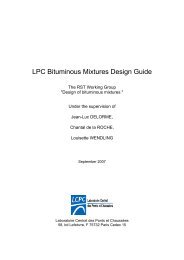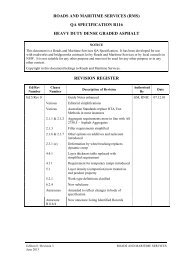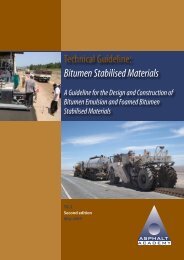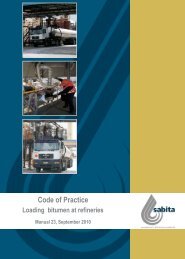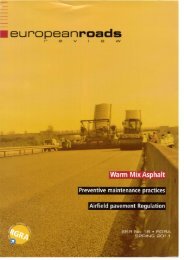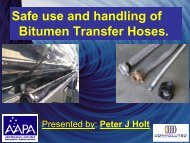Guide to the safe handling of solvents in a bituminous ... - Aapaq.org
Guide to the safe handling of solvents in a bituminous ... - Aapaq.org
Guide to the safe handling of solvents in a bituminous ... - Aapaq.org
- No tags were found...
Create successful ePaper yourself
Turn your PDF publications into a flip-book with our unique Google optimized e-Paper software.
• replace air as it is exhausted <strong>to</strong> <strong>the</strong> outside via local ventilationdevices such as fume hoods;• provide a controlled environment for specialised areas such assurgery or computer rooms.General ventilation systems comprise an air supply and an air exhaust.The air may be supplied via a central HVAC (Heat<strong>in</strong>g, Ventilation and AirCondition<strong>in</strong>g) system or, especially <strong>in</strong> older build<strong>in</strong>gs, via open<strong>in</strong>g w<strong>in</strong>dows.Labora<strong>to</strong>ry air may be exhausted through ei<strong>the</strong>r local exhaust devices or airreturns connected <strong>to</strong> <strong>the</strong> HVAC system. Local exhaust ventilation systemscapture and discharge air contam<strong>in</strong>ants or heat from po<strong>in</strong>ts <strong>of</strong> release.Common local exhaust ventilation devices found <strong>in</strong> labora<strong>to</strong>ries <strong>in</strong>clude:• chemical fume hoods;• canopy hoods;• slotted hoods;• biological <strong>safe</strong>ty cab<strong>in</strong>ets;• direct connections.Chemical hoods, canopy hoods and direct connections exhaust devicescan be used for b<strong>in</strong>der and asphalt labora<strong>to</strong>ries:• Chemical fume hoods: Chemical fume hoods are enclosed unitswith a slid<strong>in</strong>g sash for open<strong>in</strong>g or clos<strong>in</strong>g <strong>the</strong> hood. They are able <strong>to</strong>capture and exhaust even heavy vapours, and are preferred for alllabora<strong>to</strong>ry procedures that require manual <strong>handl<strong>in</strong>g</strong> <strong>of</strong> hazardouschemical material. (Refer <strong>to</strong> sub-section on <strong>safe</strong> use <strong>of</strong> chemical fumehoods below for <strong>in</strong>formation on <strong>the</strong> <strong>safe</strong> use <strong>of</strong> chemical fume hoods).• Canopy hoods: Canopy hoods are designed <strong>to</strong> capture heat fromprocesses or equipment, such as a<strong>to</strong>mic absorptionspectropho<strong>to</strong>meters or au<strong>to</strong>claves; a canopy or bonnet is suspendedover a process and connected <strong>to</strong> an exhaust vent. The follow<strong>in</strong>glimitations make canopy hoods poor substitutes for chemical fumehoods, because <strong>the</strong>y: draw contam<strong>in</strong>ated air through <strong>the</strong> user’s breath<strong>in</strong>g zone; do not capture heavy vapours; provide less conta<strong>in</strong>ment than chemical fume hoods, and aremore affected by air turbulence; do not provide adequate suction more than a few <strong>in</strong>ches awayfrom <strong>the</strong> hood open<strong>in</strong>g.58


